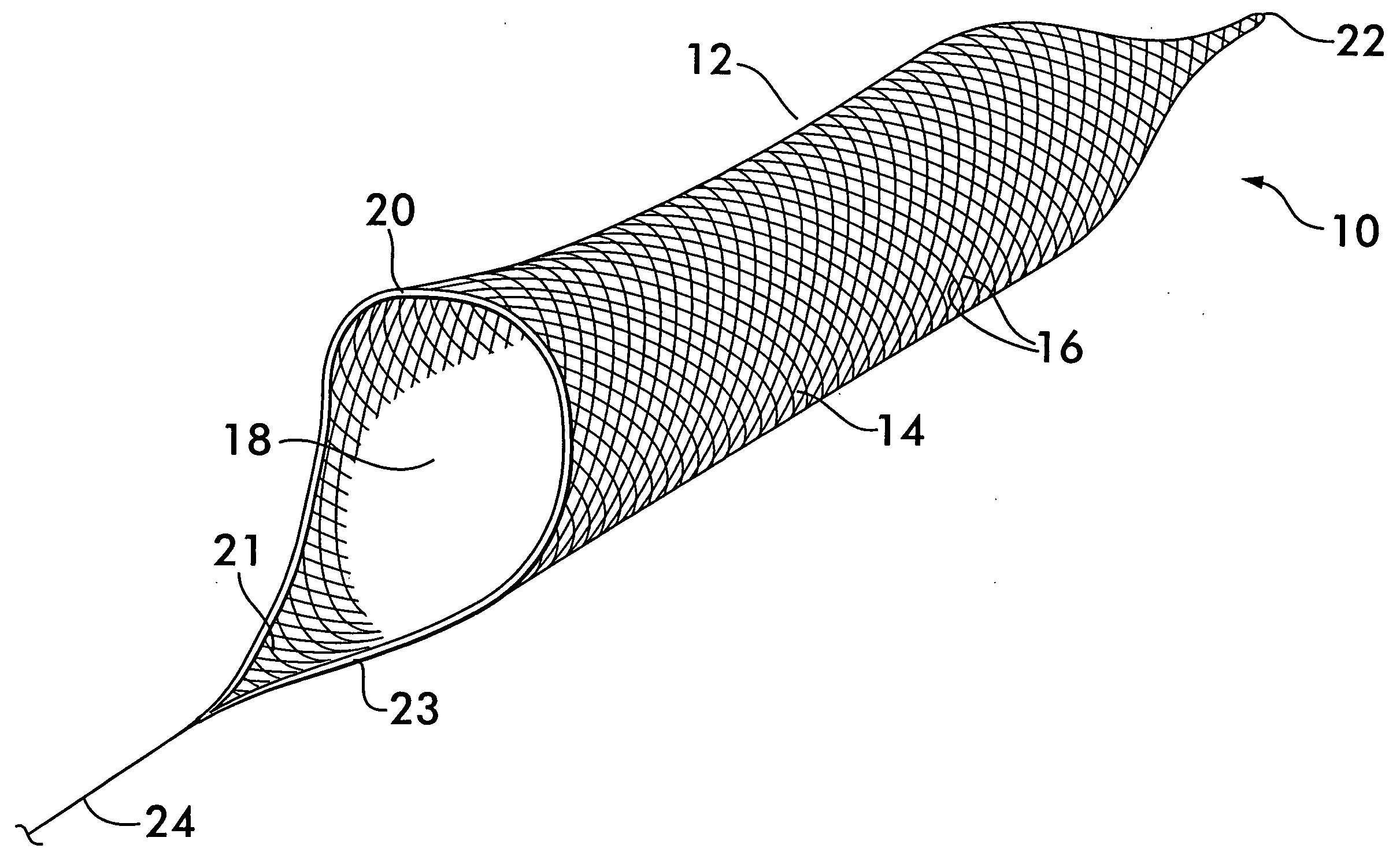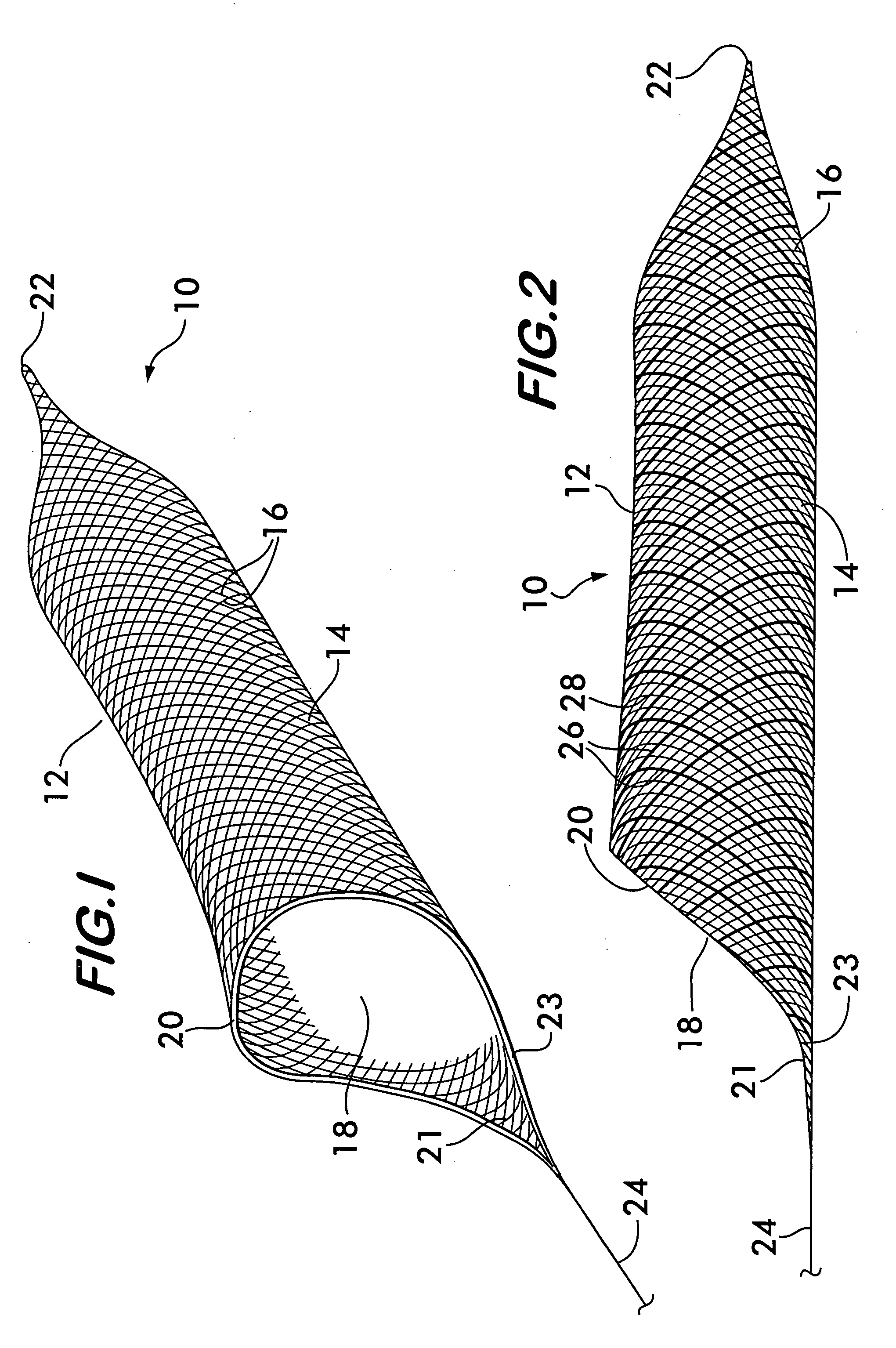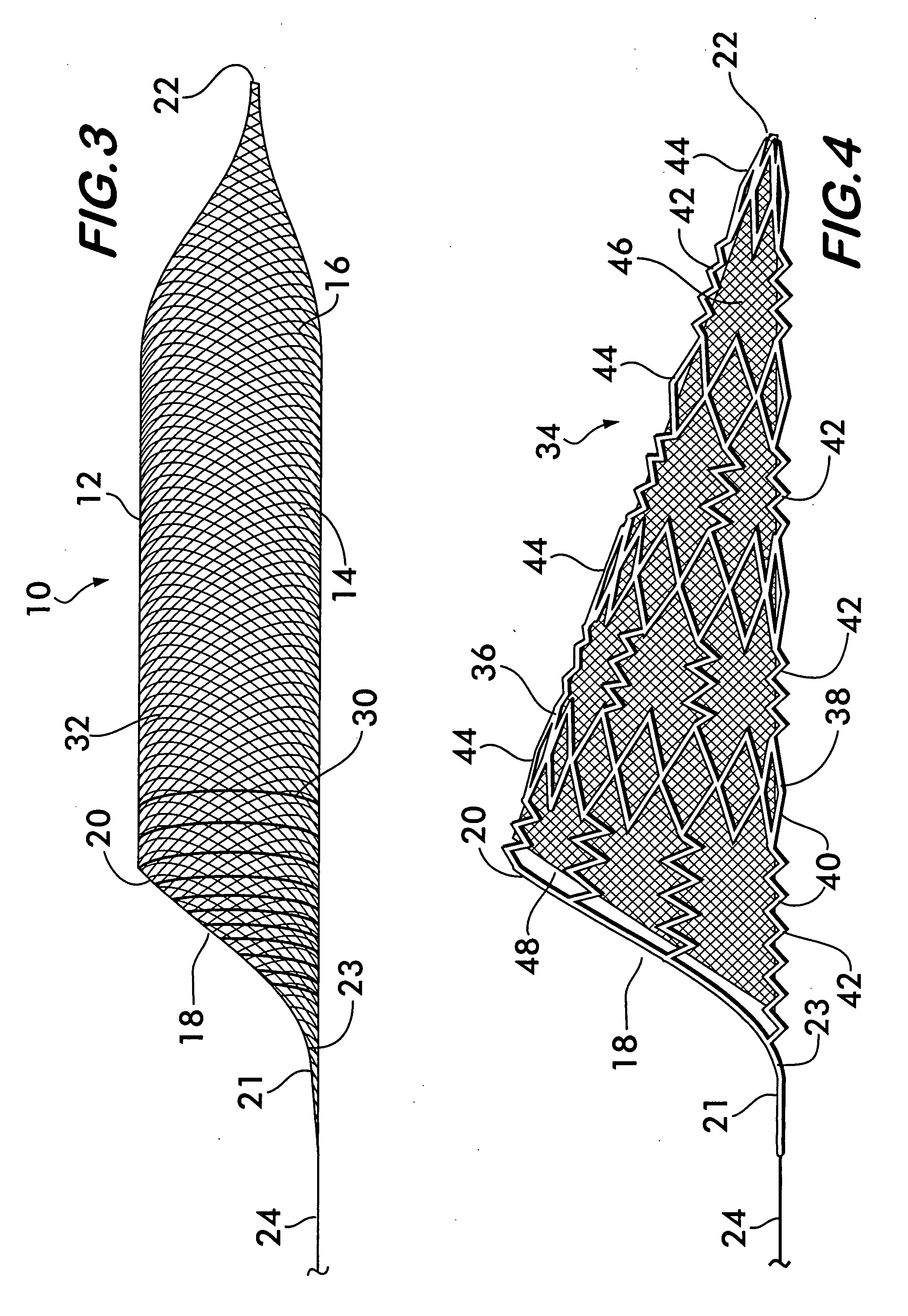Endovascular snare for capture and removal of arterial emboli
a technology of endovascular snare and emboli, which is applied in the field of endovascular snare for capture and removal of arterial emboli, can solve the problems of increased bleeding risk, increased brain damage, and reduced or totally halting
- Summary
- Abstract
- Description
- Claims
- Application Information
AI Technical Summary
Benefits of technology
Problems solved by technology
Method used
Image
Examples
Embodiment Construction
[0025]FIG. 1 shows an endovascular snare 10 according to the invention. Snare 10 comprises a basket 12 having a sidewall 14 formed from a plurality of flexible, resilient filamentary members 16. The sidewall 14 surrounds and defines a central space 18 for receiving and holding arterial emboli causing a stroke. Basket 12 is preferably elongated and has an opening 20 at one end providing access to the central space 18, the other end 22 being closed. Elongated baskets are more stable when positioned within an artery or other vessel and the stability ensures that the opening 20 will remain aligned substantially coaxially with the artery to present the maximum area of the opening to receive the embolus.
[0026] Opening 20 is preferably flared to assume a funnel shape and has a tongue 21 projecting outwardly from the basket 12. The tongue 21 has a leading edge 23 adapted to engage an embolus and separate it from a vessel wall, the tongue directing the embolus into the flared opening 20 of ...
PUM
 Login to View More
Login to View More Abstract
Description
Claims
Application Information
 Login to View More
Login to View More - R&D
- Intellectual Property
- Life Sciences
- Materials
- Tech Scout
- Unparalleled Data Quality
- Higher Quality Content
- 60% Fewer Hallucinations
Browse by: Latest US Patents, China's latest patents, Technical Efficacy Thesaurus, Application Domain, Technology Topic, Popular Technical Reports.
© 2025 PatSnap. All rights reserved.Legal|Privacy policy|Modern Slavery Act Transparency Statement|Sitemap|About US| Contact US: help@patsnap.com



